Related Research Articles

Alcamo is the fourth-largest town and commune of the Province of Trapani, Sicily, with a population of 44.925 inhabitants. It is on the borderline with the Metropolitan City of Palermo at a distance of about 50 kilometres from Palermo and Trapani.

The Sanctuary of the Most Holy Mary of the Height is a place of Marian devotion, located on the top of Mount Bonifato, in Alcamo in the province of Trapani, Italy.

Madonna del Riposo is a Catholic church located in Alcamo, in the province of Trapani.
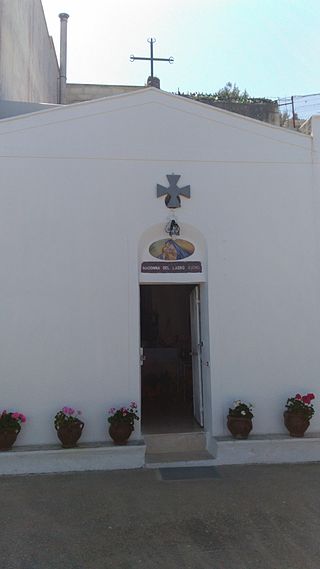
Madonna del Ladro Buono is a Catholic church in Alcamo, in the province of Trapani.
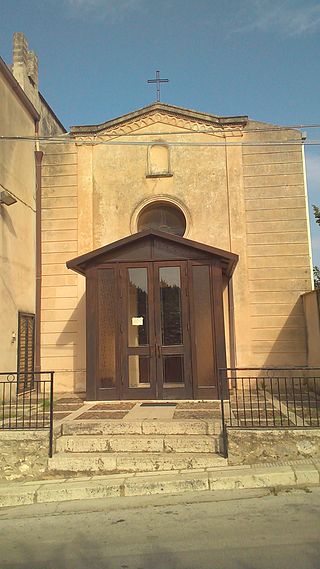
The Chapel of Santissimo Salvatore is a Catholic church in Alcamo, in the province of Trapani.
Mariano da Alcamo was an Italian Catholic presbyter.
Don Ignazio De Blasi was an Italian historian. He was the first scholar who wrote a history of his town providing documentary evidence on it.
Carlo Cataldo was an Italian historian, poet, and teacher.
Francesco Maria Mirabella was an Italian historian, educator, and poet.
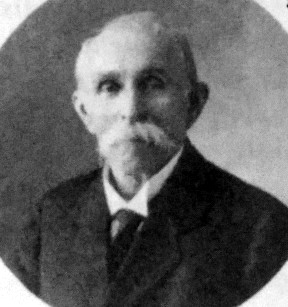
Pietro Maria Rocca was an Italian historian.

Monsignor Vincenzo Regina was an Italian presbyter and historian.

Spirito Santo is a Catholic church located in Alcamo, in the province of Trapani, Sicily.

The House of Ciullo d'Alcamo is a residential building located in the town centre of Alcamo, in the province of Trapani, Italy.
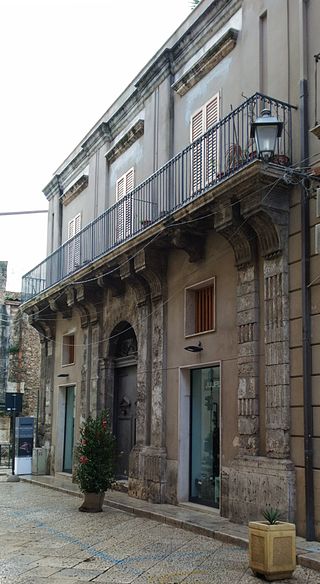
The building of the ex Loggia Comunale is located in Alcamo, in the province of Trapani.
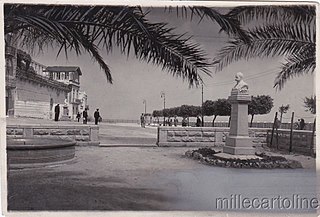
Piazza Bagolino is one of the main squares of Alcamo, in the province of Trapani. It is located near the town centre and it is one of the town attractions.
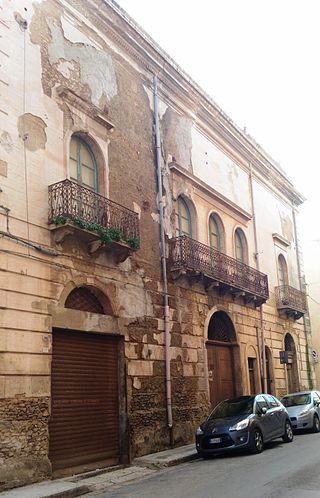
Palazzo De Stefani is an ancient residential building located in Alcamo, in the province of Trapani.
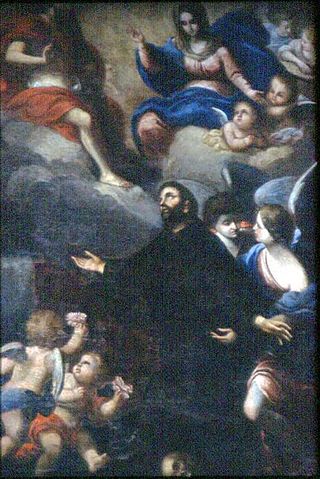
Andrea Carrera or Carreca was an Italian Baroque painter mainly active in Sicily. He was born in Trapani and died in Palermo.
Gioacchino Di Marzo was an Italian art historian, librarian and Jesuit. He was librarian to the Comunale di Palermo as well as a historiographer and one of the founders of modern Sicilian art history.
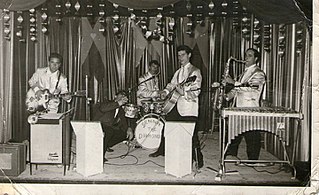
Fausto Cannone was an Italian singer-songwriter, teacher and poet.
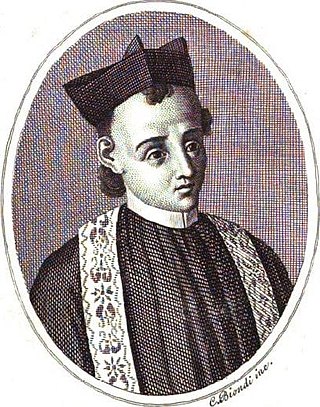
Tommaso Aversa was an Italian Baroque poet and playwright.
References
- 1 2 3 4 F. M. Mirabella, Cenni degli alcamesi rinomati in scienze, lettere, arti, armi e santità, Alcamo, tip.Surdi & C., 1876.
- 1 2 3 4 5 Dizionario Biografico degli Italiani Volume 5, Treccani, 1963.
- ↑ alqamah.it, http://www.alqamah.it/2016/01/21/sebastiano-bagolino-uno-tra-i-piu-noti-poeti-latini-della-sicilia-del-xvi-secolo/
- ↑ Carlo Cataldo: Lo scultore alcamese Giuseppe Bambina; Alcamo, Graficamente; 2014